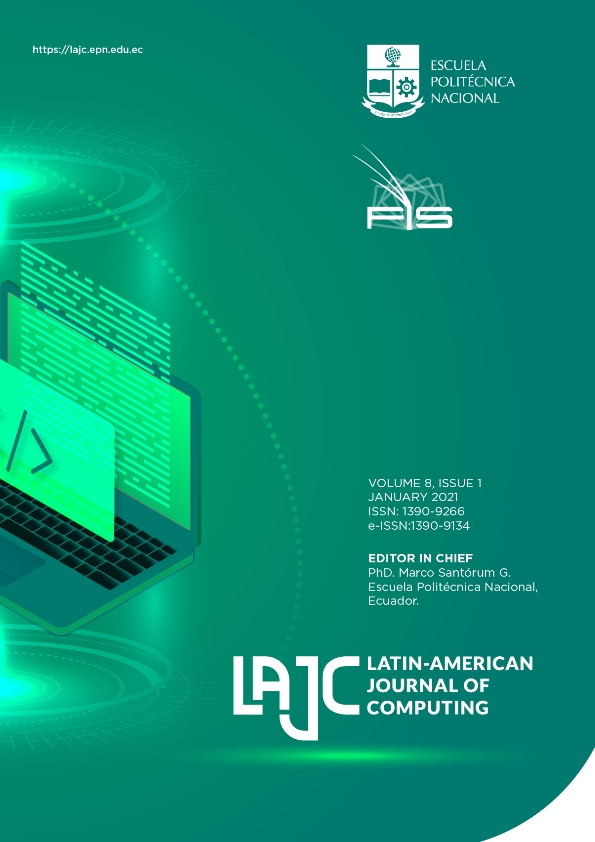Vehículo Eléctrico con Algoritmo de Control de Velocidad y Freno Regenerativo y Diseño de una Aplicación Web Móvil Basada en IoT
Palabras clave:
controlador PI, motor BLDC, algoritmo de velocidad, control adaptativo de referencia de modelo (MRAC), frenado regenerativo, base de fuego, interfaz de programación de aplicaciones (API)Resumen
Actualmente, la mayoría de los vehículos eléctricos para la movilidad personal no mantienen una velocidad constante y no frenan automáticamente cuando el sistema lo requiere. Además, esta energía de frenado no se utiliza para alimentar el propio sistema. Para superar estos problemas, este trabajo presenta la implementación de algoritmos de control y una aplicación web para un vehículo eléctrico de movilidad personal. Se implementa un algoritmo de control en cascada donde el lazo interno es el par y el lazo externo es la velocidad. Además, se diseñó una aplicación web móvil basada en el internet de las cosas (IoT) para mostrar en tiempo real, información importante sobre el estado del sistema. Finalmente, se realizaron simulaciones y pruebas reales que indicaron una respuesta rápida de par y velocidad cuando el sistema está sujeto a diferentes escenarios de movilidad.
Descargas
Referencias
P. Alex, “Design and implementation of speed and torque control with regenerative braking for a platform prototype of an electric unicycle,” February 2019.
T. Miller, “Brushless permanent magnet and reluctance Motor Drives,” Oxford University, USA, 1989.
Mohan Ned, “Electric drives, an integrate approach,” USA, MNPERE Minneapolis, 2001.
G. Papadopoulos, “PID controller tuning using the magnitude optimun criterion,” Springer, Suiza, 2015.
K. Ogata, “Modern Control Engineering,” PEARSON, 5th Ed., Madrid, 2010.
Embetion, “Adaptive algorithms,” [Online]. Available: https://www.embention.com [Accessed: Sep.11,2020].
MIT, “Discrete Approximation of Continuous Time Systems,” [Online]. Available: https://ocw.mit.edu/terms/ [Accessed: Sep.11,2020]
Firebase, “Firebase Realtime Database,” [Online]. Available: https://firebase.google.com/docs/database [Accessed: Nov.05, 2020]
Firebase, “App development platform,” [Online] Available: https://firebase.google.com/docs/database [Accessed: Nov.06, 2020]
C. Kuo “Automatic control systems,” PRENTICE HALL, 7th Ed, New York, 2010
D. Stefano, C. Pablo, S. Aldo, G. Patrik, P. Pietro and V. Fabio “ Torque-fill control and energy management for a four-wheel-drive electric vehicle layout With two-speed transmissions,” ” IEEE Transactions on Industry Applications, October 2016.
M. Arash, S. Aldo, G. Patrick, F. Saber and S. Jasper “A fast and parametric torque distribution strategy for four-wheel-drive energy-efficient electric vehicles” IEEE Transactions on Industry Applications,” IEEE Transactions on Industrial Electronics, July 2016.
R. Desna, H. Eko, S. Randen and D. Dadet “PENS-Wheel (One-Wheeled Self Balancing Vehicle) Balancing Control using PID Controller,” Conference International Electronics Symposium 2016.
R. Jiageng Ruan and S. Qiang “A Novel Dual-Motor Two-Speed Direct Drive Battery Electric Vehicle Drivetrain,” IEEE Access, April 2019.
R. Bakhtiar, H.Eko, S. Raden and P. Dadet “PENS-Wheel (Self Balancing One-Wheel Vehicle) Mechanical Design and Sensor System,” Conference International Electronics Symposium 2016.
NewScientist, “Electric cars really are a greener option than fossil fuel vehicles,” [Online]. Available: www.newscientist.com [Accessed: Nov. 11, 2020]
Descargas
Publicado
Número
Sección
Licencia
Aviso de derechos de autor/a
Los autores/as que publiquen en esta revista aceptan las siguientes condiciones:
- Los autores conservan los derechos de autor y ceden a la revista el derecho de la primera publicación, con el trabajo registrado con la Creative Commons Attribution-Non-Commercial-Share-Alike 4.0 International, que permite a terceros utilizar lo publicado siempre que mencionen la autoría del trabajo y a la primera publicación en esta revista.
- Los autores pueden realizar otros acuerdos contractuales independientes y adicionales para la distribución no exclusiva de la versión del artículo publicado en esta revista (p. ej., incluirlo en un repositorio institucional o publicarlo en un libro) siempre que indiquen claramente que el trabajo se publicó por primera vez en esta revista.
- Se permite y recomienda a los autores a compartir su trabajo en línea (por ejemplo: en repositorios institucionales o páginas web personales) antes y durante el proceso de envío del manuscrito, ya que puede conducir a intercambios productivos, a una mayor y más rápida citación del trabajo publicado.
Descargo de Responsabilidad
LAJC en ningún caso será responsable de cualquier reclamo directo, indirecto, incidental, punitivo o consecuente de infracción de derechos de autor relacionado con artículos que han sido presentados para evaluación o publicados en cualquier número de esta revista. Más Información en nuestro Aviso de Descargo de Responsabilidad.










